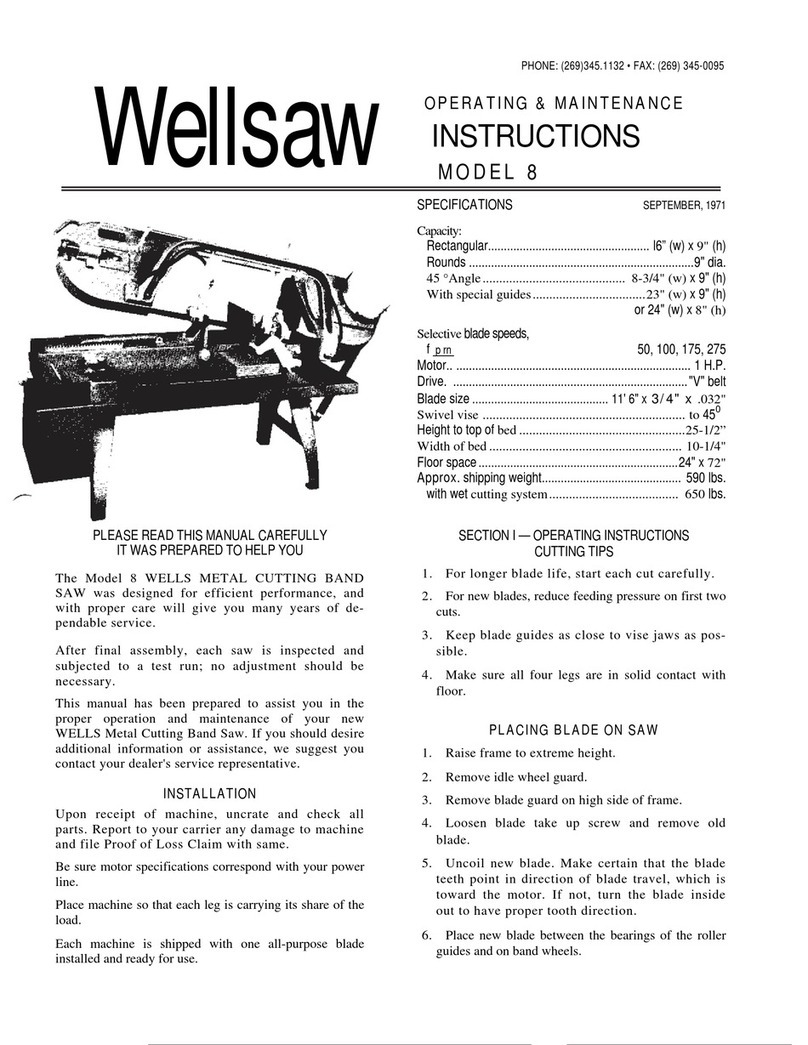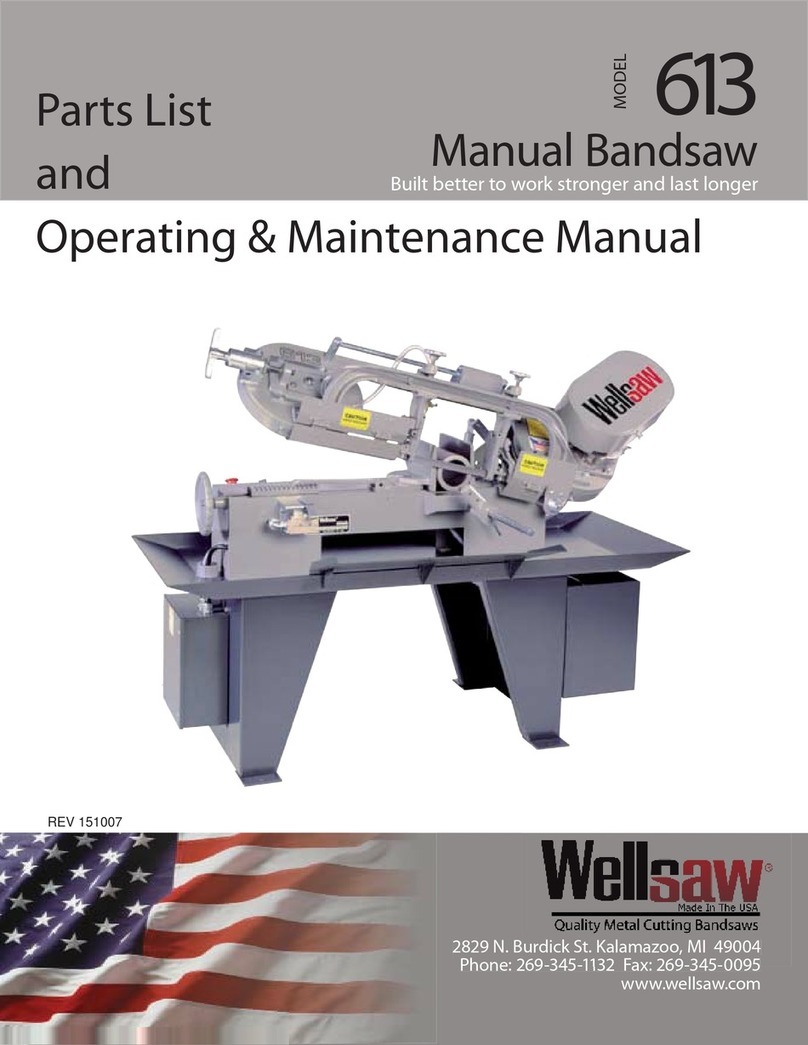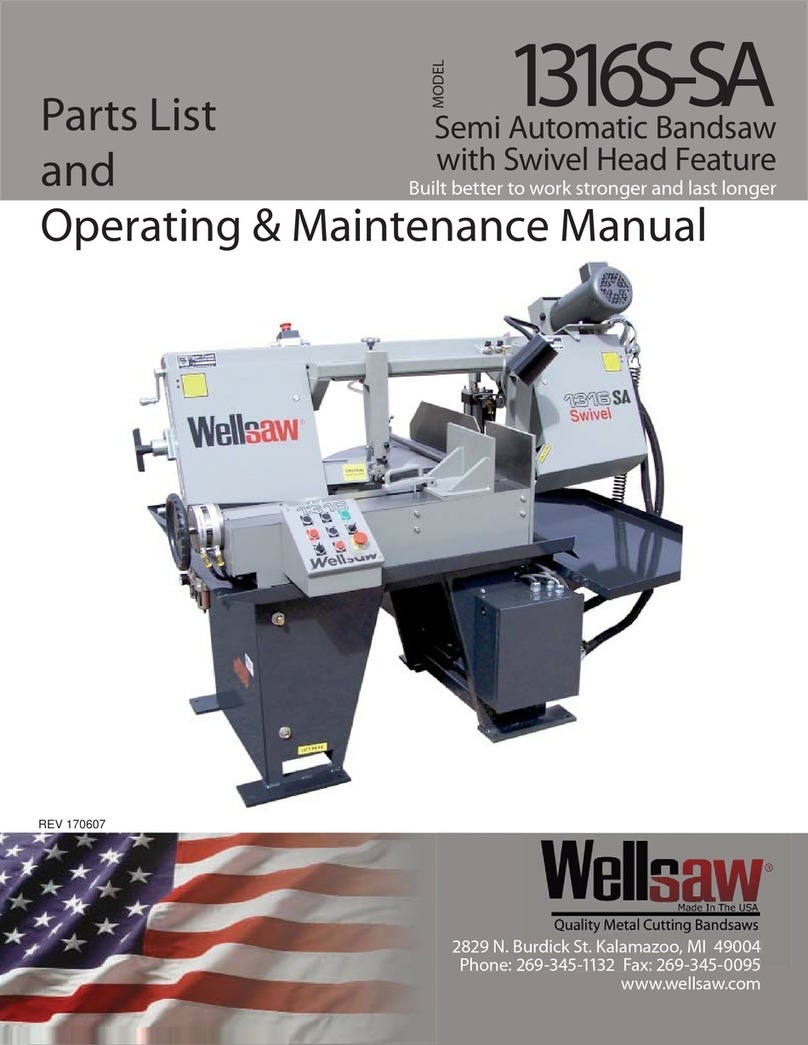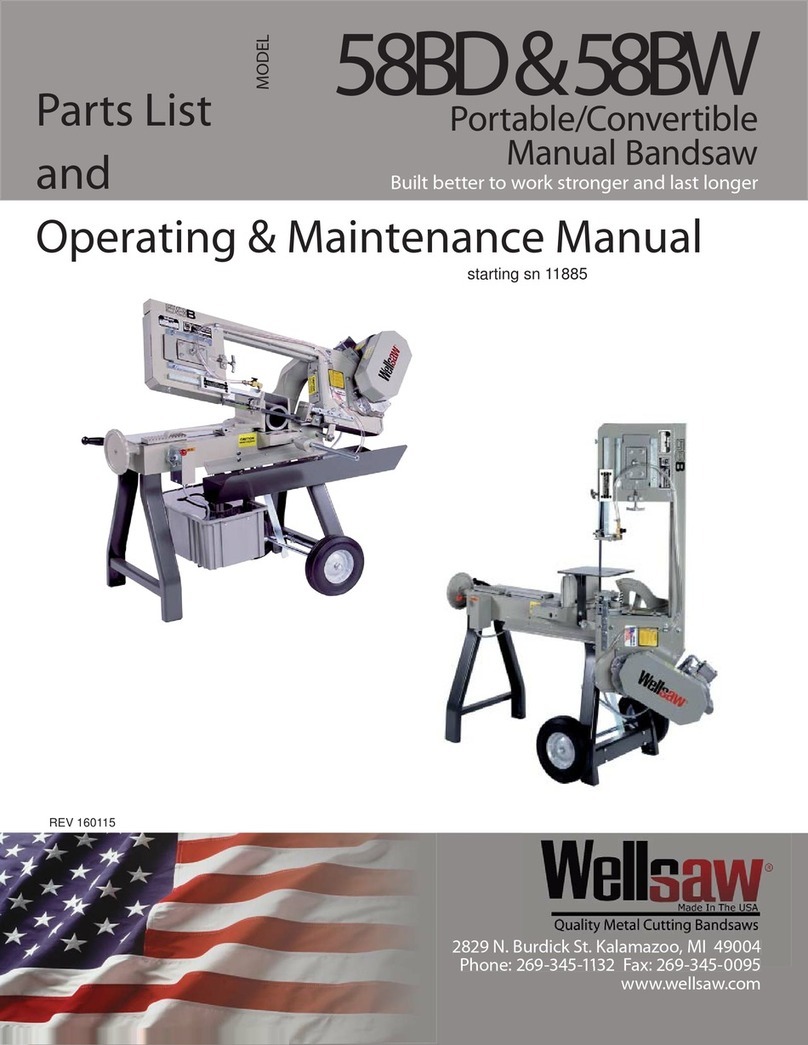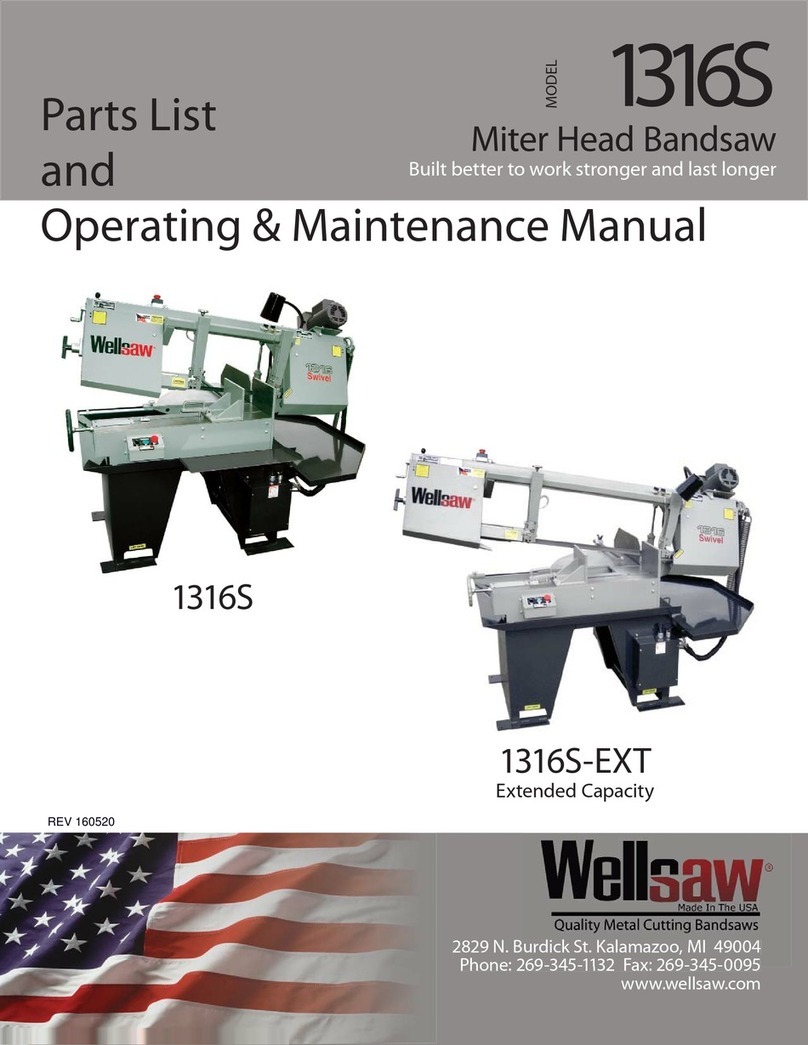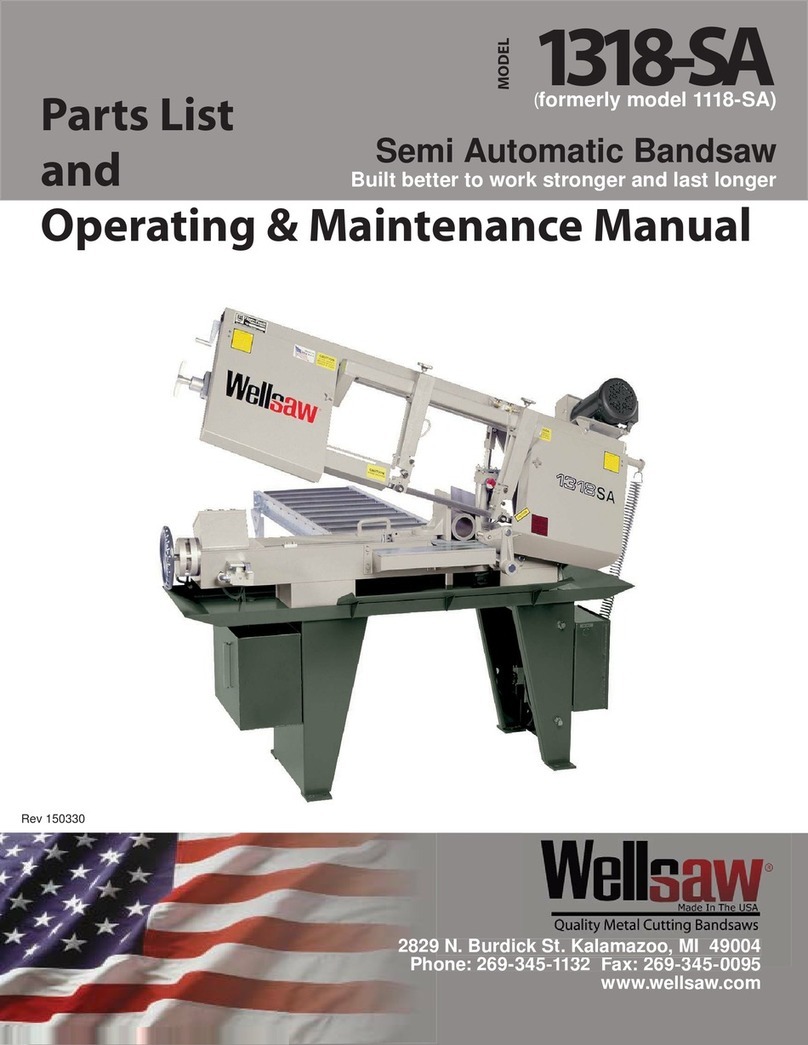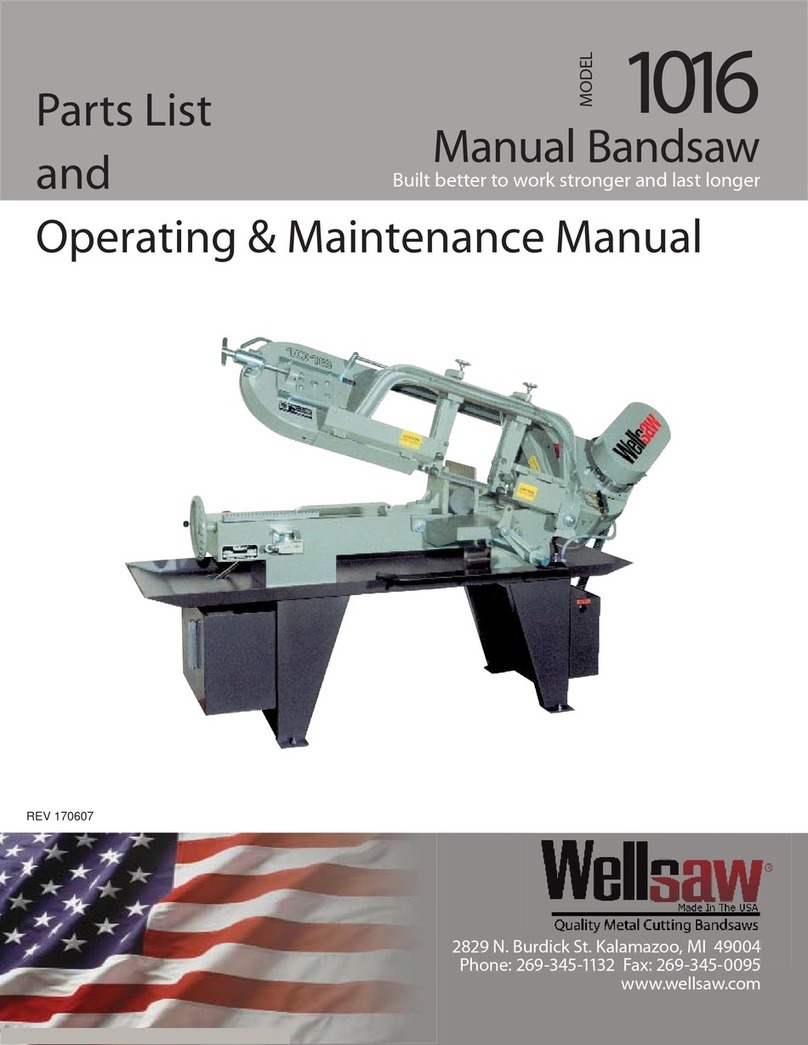
5
SLIDING VISE JAW
The sliding vise jaw is equipped with a ratchet and
ratchet dog for quick action and with a hand wheel for
tightening work in vise.
Excessive pressure is not required to hold
material securely in the vise.
MAXIMUM CAPACITY
To obtain maximum vise capacity remove vise jaw
pins and move fi xed vise jaw toward motor end. Make
sure stock in vise will not strike the ratchet arm.
DASH POT
Machines are equipped with a dash pot (frame check)
for the purpose of stabilizing the downward travel of
the saw frame, thereby protecting saw blade from
damage. The action is hydraulic and controlled by
fl ow of fl uid being bypassed through an orifi ce in the
piston on the downward stroke. Only light hydraulic
oil should be used in the cylinder.
SWITCH
A “STOP-START” switch is installed across the line
to protect the wiring and brushes of the motor. A ther-
mal coil is provided which breaks the circuit should an
overload occur in the line. The operator should allow
time for coil to cool before trying to start after the cir-
cuit has been broken.
Automatic shut-off operates when saw frame contacts
the switch trigger, which is attached to the frame rest.
BELT
Usually the weight of the motor holds the belt tight
enough, but in case it does not, the clamp on the
swivel post should be tightened.
SPEED SELECTION
Saws are equipped with step pulleys, which provide a
selection of speed ranges:
• Use the fast speed to cut thin-wall metal, tubing,
thin channels, aluminum, thin brass, or any metal
that will not burn the teeth.
• Use the medium speeds on general cutting such
as cold rolled, machine steels, heavy channels,
etc.
• Use the slow speed for cutting nickel steels or any
metals which require a slow speed on a lathe.
• Use beeswax when cutting brass. Brass should al-
ways be cut with a blade which has not previously
cut other metal.
• If teeth wear off unusually fast, use slower speed.
Always keep the blade at proper blade tension
when cutting.
MAINTENANCE
BLADE GUIDES
The blade guides are arranged to hold the blade in
alignment both vertically and horizontally.
Before making any adjustments, always try a new
blade to be sure that the old blade was not caus-
ing the diffi culty.
To align the blade horizontally, be sure fi xed vise is
square with bed, then square blade with vise. If out of
alignment, loosen one upper set screw In “Roller Ad-
juster” (M-92) and tighten opposite set screw, moving
blade in desired direction.
For the vertical alignment, raise frame until blade
just clears bed, then place edge of square on bed with
end against blade being careful not to contact tooth
set. Use feeler gauge not to exceed .002”, adjusting
blade so that feeler gauge will not enter at top or bot-
tom between end of square and blade. If out of align-
ment, loosen one lower set screw in “Roller Adjuster”
(M-92) and tighten opposite set screw, moving blade
in desired direction. For this vertical alignment, check
blade at both front and rear guides.
Adjust the side roller guides (#100406-001) with
the eccentric axle until both rollers contact blade.
When this adjustment is made, the rollers should be
adjusted so that the path of the blade is straight
and blade is not forced to curve around the rollers.
The back edge of the blade should be even with the
top surface of the side rollers. The top roller guide
(#100406-001) should be in contact with back of blade
at all times.
Always keep set screws and thumb screws tight.
